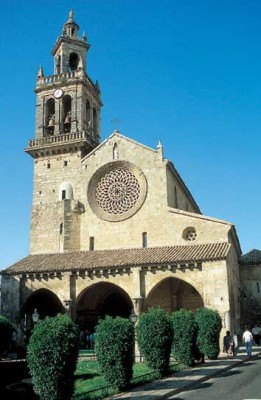A new parish church dedicated to San Lorenzo was established on a site formerly occupied by a mosque.
It was built between 1244 and 1300.
The church layout is in keeping with the characteristics of medieval churches within Andalusia: a rectangle divided into three naves with four sections, with an apse and without a cross aisle.
The walls are laid out in a manner that is repeated in other cordovan churches.
Its tower was originally an Islamic minaret on which Hernán Ruiz el Joven erected one of the most graceful towers of the city wherein the first two bodies have a square form, although the second is rotated 45 degrees.
The rose window, adorning the upper part of the gable, is also important, constituting one of the finest amongst churches of this period.
Attention should also be drawn to the 17th-century main altarpiece, which is adorned with paintings depicting the life of San Lorenzo.
The church possesses important medieval wall paintings and imagery such as the Cristo del Remedio de Animas, the 17th-century sculpture of the Señor de la Humildad and Jesus del Calvario, an 18th century work executed in Granada.
The trousseau also bears mention for its magnificent 19th-century silverwork.



